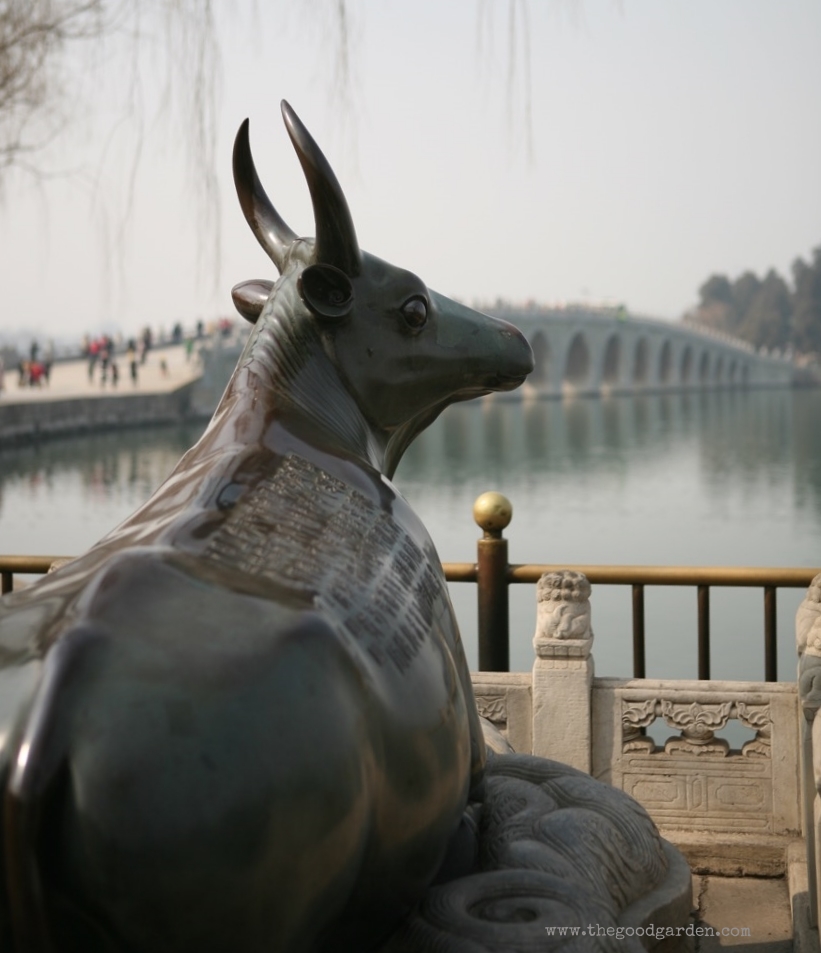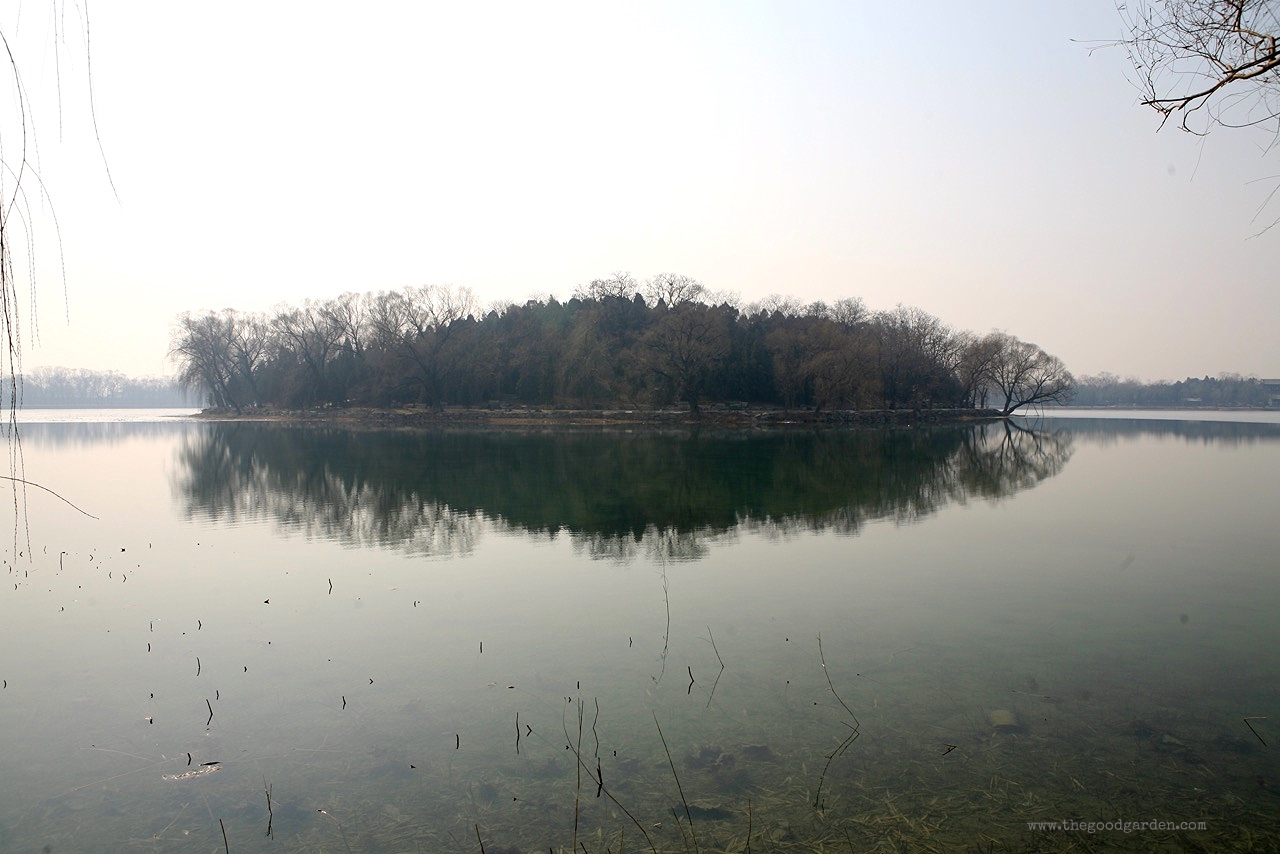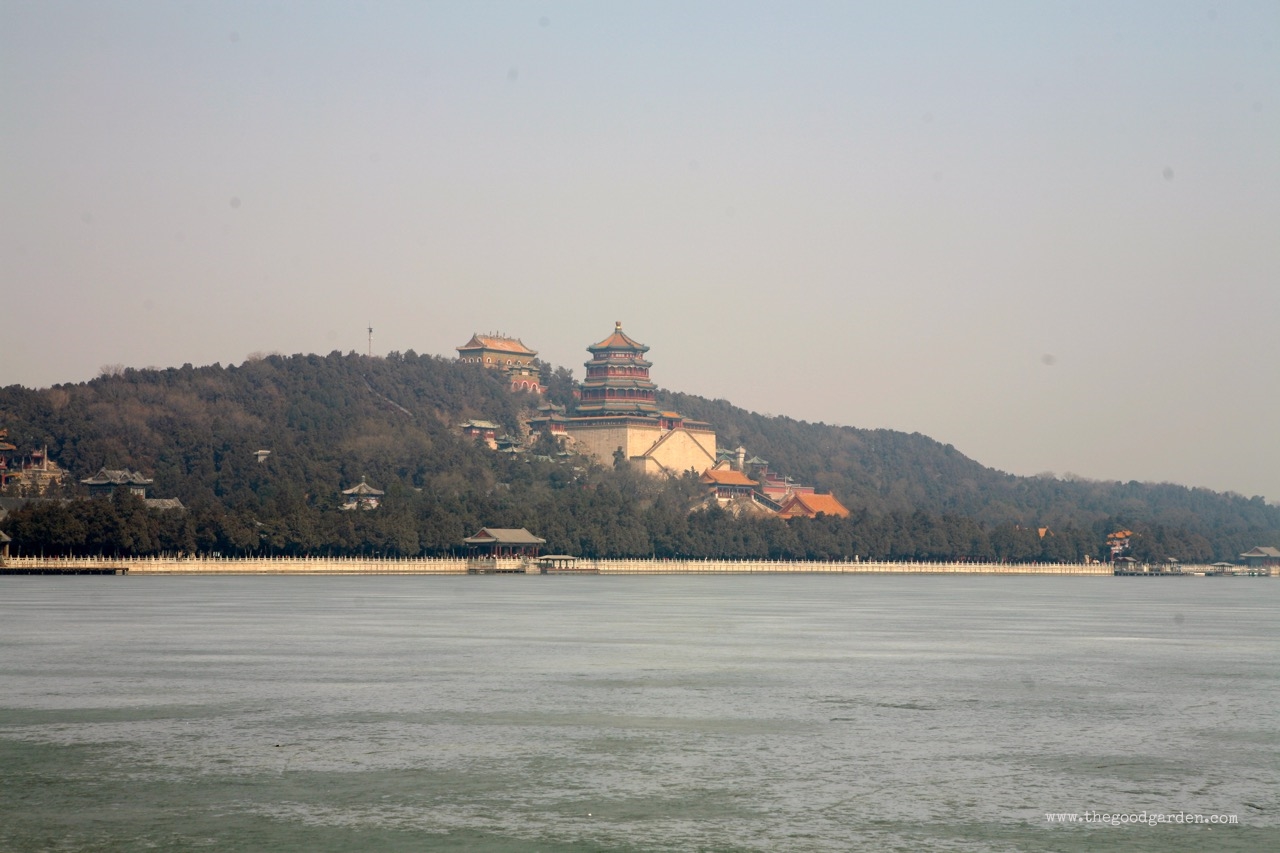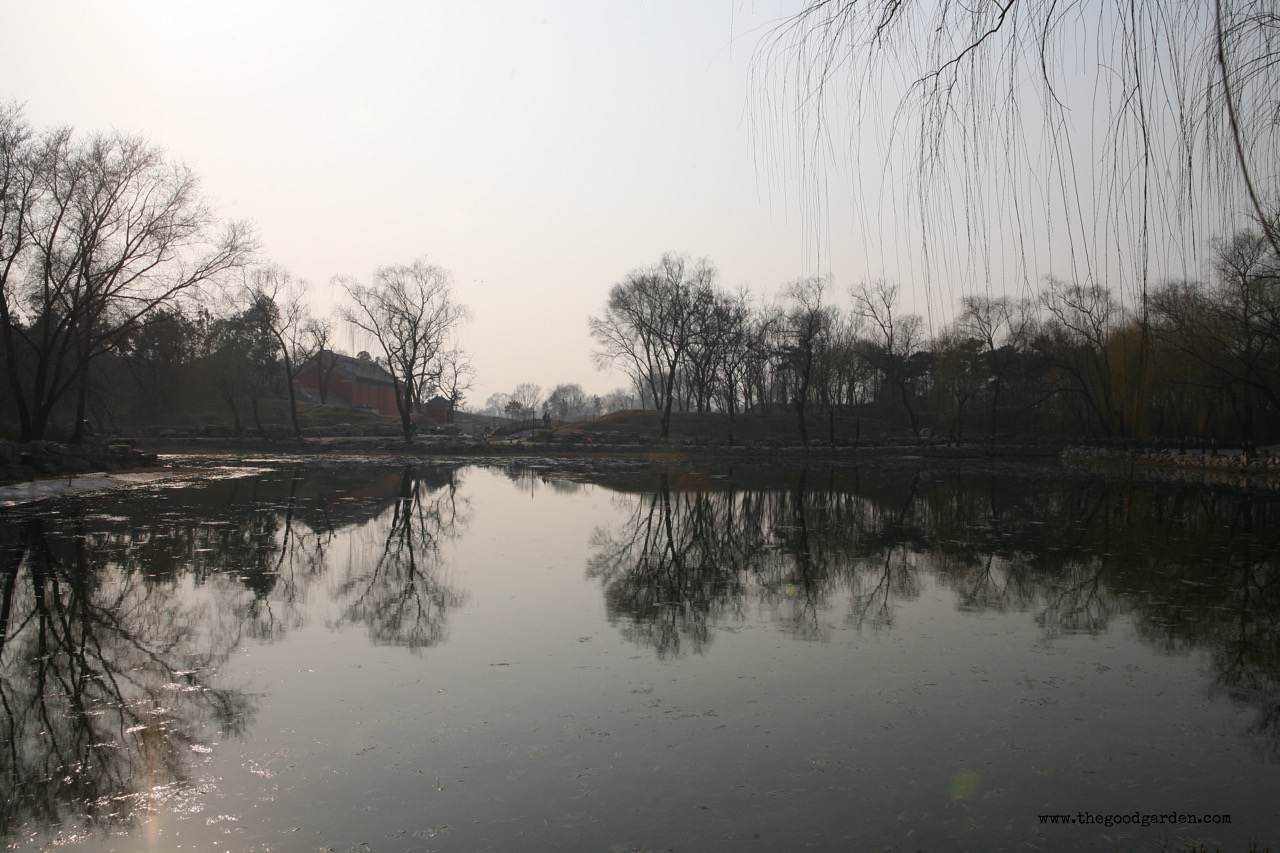Some believe that the development of the picturesque style in Europe was directly inspired by tales from travelers returning from China.
One example of a garden that may have inspired Europeans in this way is the Garden of Clear Ripples created in 1750 by Emperor Qianlong.
The hill and pond structure that we see in this garden, we also see in the scholar gardens of Suzhou and in Japanese gardens. Dominant features in the Garden of Clear Ripples include Kunming Lake, which makes up 75% of the garden, Longevity Hill, and three islands connected by bridges.
Traditional buildings enhance the garden and provide places to pause, relax. The garden is laid out to provide views and vignettes from key vantage points along the path. The overriding theme is harmony with nature; some elements mirror features of the natural scenery found beside the Yangtze River.
A sign along the main garden path explains that this section was inspired by a painting from around 1300 and reminds us that this garden was destroyed in 1860 and rebuilt in 1992. (click on image to read the text)
On the winter day of my visit, the garden was quite busy. I was told by my guide that during the spring and summer this garden is packed. A pile of dragon boats stored in a cove wait for warmer weather to carry passengers into the lake.
The story of this garden follows the modern history of China’s relations with the West which resulted in its destruction, and re-creation several times.
In the 1840’s, silk, porcelain, and tea exports from China flooded into Europe, but few Western goods made it into China. In an attempt to offset the trade imbalance, the British East India Company began importing opium from India into China via middlemen. Chinese efforts to stop this led to the Opium Wars. During the 2nd Opium War in the 1850’s, Anglo-French forces destroyed the garden.
Abandoned for a generation, the garden was rebuilt in the 1890’s and renamed the Summer Palace for the Empress Dowager Cixi. When the Empress allied herself with the Boxers, an anti-foreign and anti-Christian group, attacks on missionaries and diplomats resulted in another Western military mission in China. During the invasion in 1900, the garden was destroyed once again. Today the garden holds pride of place for the Chinese and is protected as a Cultural Relic.
Learn more about visiting this garden here.









